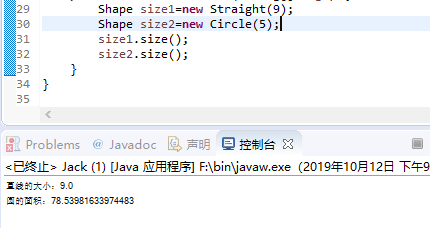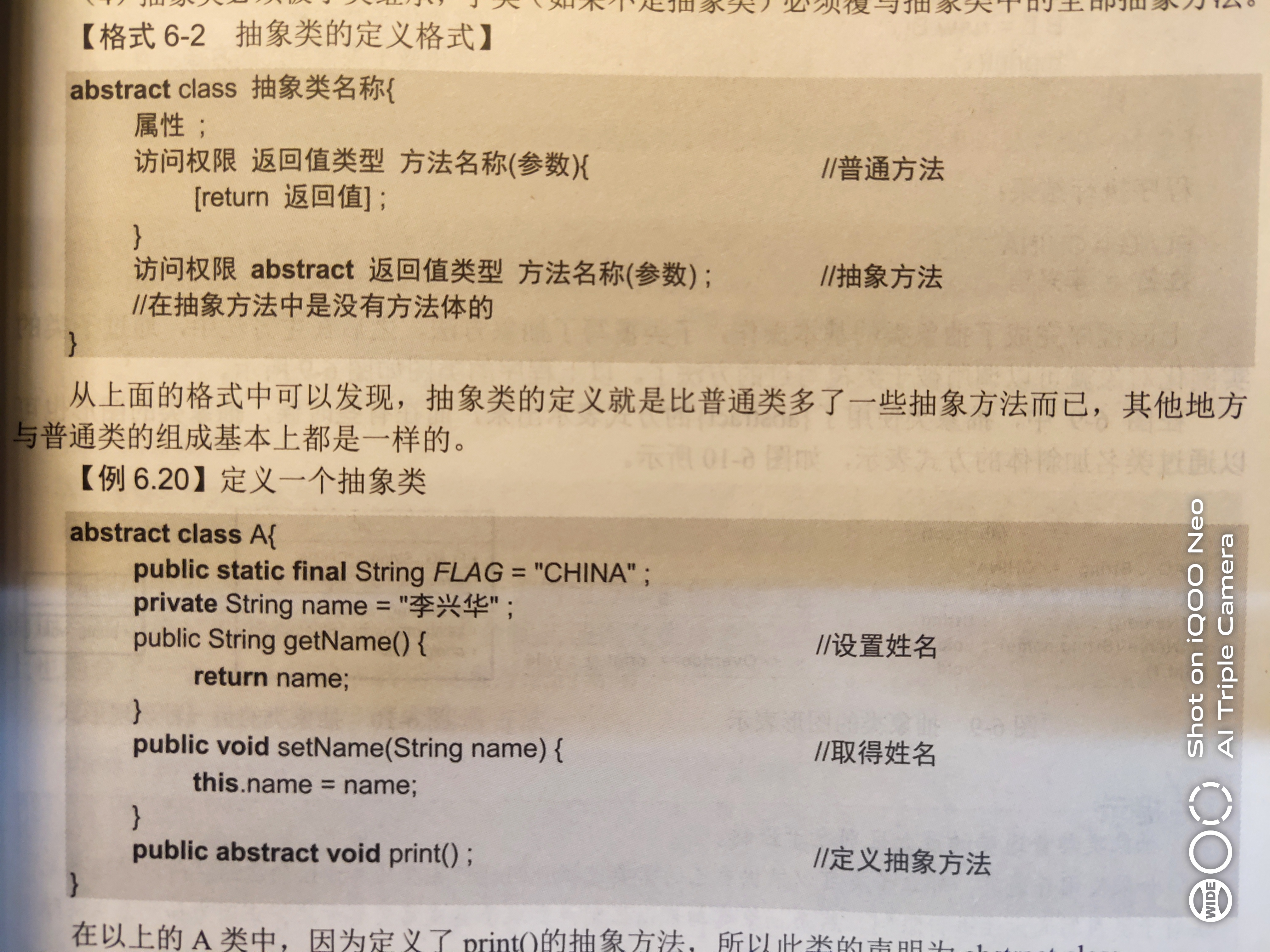实验四 类的继承
- 实验目的
- 理解抽象类与接口的使用;
- 了解包的作用,掌握包的设计方法。
- 实验要求
- 掌握使用抽象类的方法。
- 掌握使用系统接口的技术和创建自定义接口的方法。
- 了解 Java 系统包的结构。
- 掌握创建自定义包的方法。
- 实验内容
(一)抽象类的使用
- 设计一个类层次,定义一个抽象类--形状,其中包括有求形状的面积的抽象方法。 继承该抽象类定义三角型、矩形、圆。 分别创建一个三角形、矩形、圆存对象,将各类图形的面积输出。
注:三角形面积s=sqrt(p*(p-a)*(p-b)*(p-c)) 其中,a,b,c为三条边,p=(a+b+c)/2
2.编程技巧
(1) 抽象类定义的方法在具体类要实现;
(2) 使用抽象类的引用变量可引用子类的对象;
(3) 通过父类引用子类对象,通过该引用访问对象方法时实际用的是子类的方法。可将所有对象存入到父类定义的数组中。
(二)使用接口技术
1定义接口Shape,其中包括一个方法size(),设计“直线”、“圆”、类实现Shape接口。分别创建一个“直线”、“圆”对象,将各类图形的大小输出。
- 编程技巧
(1) 接口中定义的方法在实现接口的具体类中要重写实现;
(2) 利用接口类型的变量可引用实现该接口的类创建的对象。
(一)源代码
abstract class shape { public abstract double print(); } class Triangle extends shape{ private double a; private double b; private double c; public Triangle(double a,double b,double c) { this.a=a; this.b=b; this.c=c; } public double print() { double p=(a+b+c)/2; return Math.sqrt(p*(p-a)*(p-b)*(p-c)); } } class Rectangle extends shape{ private double width; private double height; public Rectangle(double width,double height) { this.height=height; this.width=width; } public double print() { return width*height; } } class Circle extends shape{ double radious; public Circle(double radious) { this.radious=radious; } public double print() { return Math.PI*radious*radious; } } public class Jack{ public static void main(String[] args) { shape arae1=new Triangle(6,8,10); shape area2=new Rectangle(6,10); shape area3=new Circle(3); System.out.println("三角形的面积:"+area1.print()); System.out.println("矩形的面积:"+area2.print()); System.out.println("圆的面积:"+area3.print()); } }
运行结果

(二)源代码
interface Shape{ public abstract void size(); } class Straight implements Shape{ private double figure; public Straight(double figure) { this.figure=figure; } public void size() { System.out.println("直线的大小:"+figure); } } class Circle implements Shape{ private double radius; public Circle(double radius) { this.radius=radius; } public void size() { System.out.println("圆的面积:"+Math.PI*radius*radius); } } public class Jack{ public static void main(String[] args) { Shape size1=new Straight(9); Shape size2=new Circle(5); size1.size(); size2.size(); } }
运行结果

总结:第一题的步骤就是 定义抽象方法——>子类继承抽象方法——>子类调用抽象方法——>通过子类实例化抽象方法。
第二题的方法其实也是一样只是子类是通过接口实现继承的。
学习总结:
1、抽象类

2、接口定义:

实现接口:
